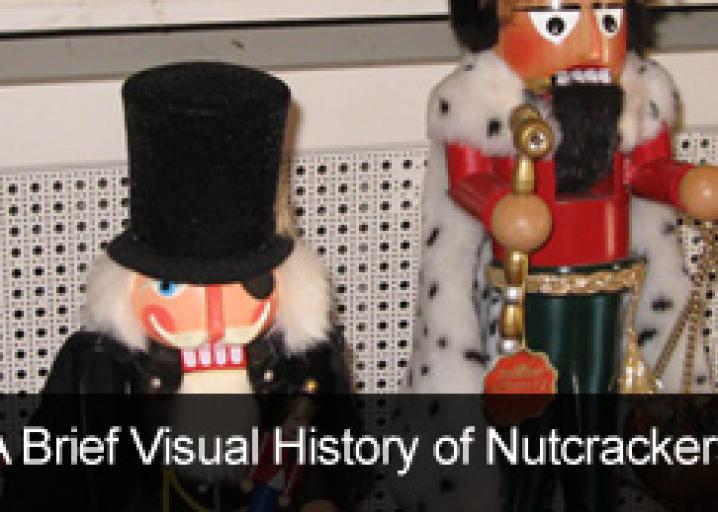Concetti Chiave
The author explores the rich history and cultural significance of nutcrackers, tracing their origins from European folklore to modern American traditions.
Sintesi
Nutcrackers have a deep-rooted history that transcends mere Christmas decorations. Originating from European folklore, these figurines symbolize good luck and have evolved into a cherished tradition in American households. The narrative delves into the historical context, manufacturing evolution, and commercialization of nutcrackers, shedding light on their enduring appeal and sentimental value.
A brief history of nutcrackers.
Statistiche
Tools to crack nuts date back to the 14th century.
German woodworkers began carving distinctive soldier-dolls in the late 17th century.
Nutcrackers were commercially produced in factories by the 1870s.
The famous ballet "The Nutcracker" contributed significantly to the popularity of nutcrackers.
Americans were introduced to German nutcrackers post-WWII through G.I.s stationed in West Germany.
East German manufacturers exported nutcrackers to West Germany during the Cold War era.
Americans spend over $8 billion annually on Christmas decorations.
Citazioni
"The dolls symbolize good luck in German tradition."
"Nutcrackers stand there solidly, year after year."
"It's precisely the sort of American sentimentalism that's kept the German tradition in business all these years."
Approfondimenti chiave tratti da
by Noreen Malon... alle www.slate.com 02-21-2024
http://www.slate.com/articles/life/holidays/2010/12/in_a_nutshell.html
Domande più approfondite
What cultural significance do nutcrackers hold beyond being Christmas decorations?
Nutcrackers have a rich cultural history that goes beyond their role as Christmas decorations. Originating in Europe, particularly Germany, nutcrackers were initially symbols of good luck and were associated with various folk tales and myths. They were also practical tools used to crack nuts, reflecting the resourcefulness and craftsmanship of European artisans. Additionally, nutcrackers became popular gift items exchanged during holidays and special occasions, symbolizing prosperity and unity within communities. The evolution of nutcracker designs over time has intertwined them with broader cultural narratives, making them not just festive ornaments but also artifacts representing tradition, craftsmanship, and storytelling.
How did the commercialization of nutcrackers impact their traditional roots?
The commercialization of nutcrackers had a significant impact on their traditional roots by transforming them from handcrafted artisanal pieces into mass-produced consumer goods. As demand for nutcrackers grew globally, especially in America post-World War II due to G.I.s stationed in Germany purchasing them as gifts, manufacturers shifted towards factory production methods to meet market needs efficiently. This shift led to a dilution of the unique craftsmanship and regional characteristics that defined traditional nutcracker designs. Moreover, the entry of cheaper alternatives made overseas resulted in a decline in quality and authenticity compared to original German-made nutcrackers. The focus on profit margins rather than preserving heritage diminished the cultural value attached to these figurines.
How does the evolution of nutcracker designs reflect changing consumer preferences?
The evolution of nutcracker designs reflects changing consumer preferences by showcasing a shift towards novelty, personalization, and pop culture influences over time. Initially crafted as soldier-like figures or characters from folklore without specific holiday associations, modern-day consumers gravitate towards themed or customized versions that resonate with contemporary tastes. Manufacturers began producing diverse variations such as mailman or historical figure-themed nutrackers catering to niche interests while retaining elements like bright colors and whimsical details to attract buyers seeking unique decor items. This adaptation demonstrates how consumer demands for individuality and relevance have shaped the design landscape of nutrackers from traditional wooden soldiers to eclectic collectibles tailored for different audiences' preferences.
0
